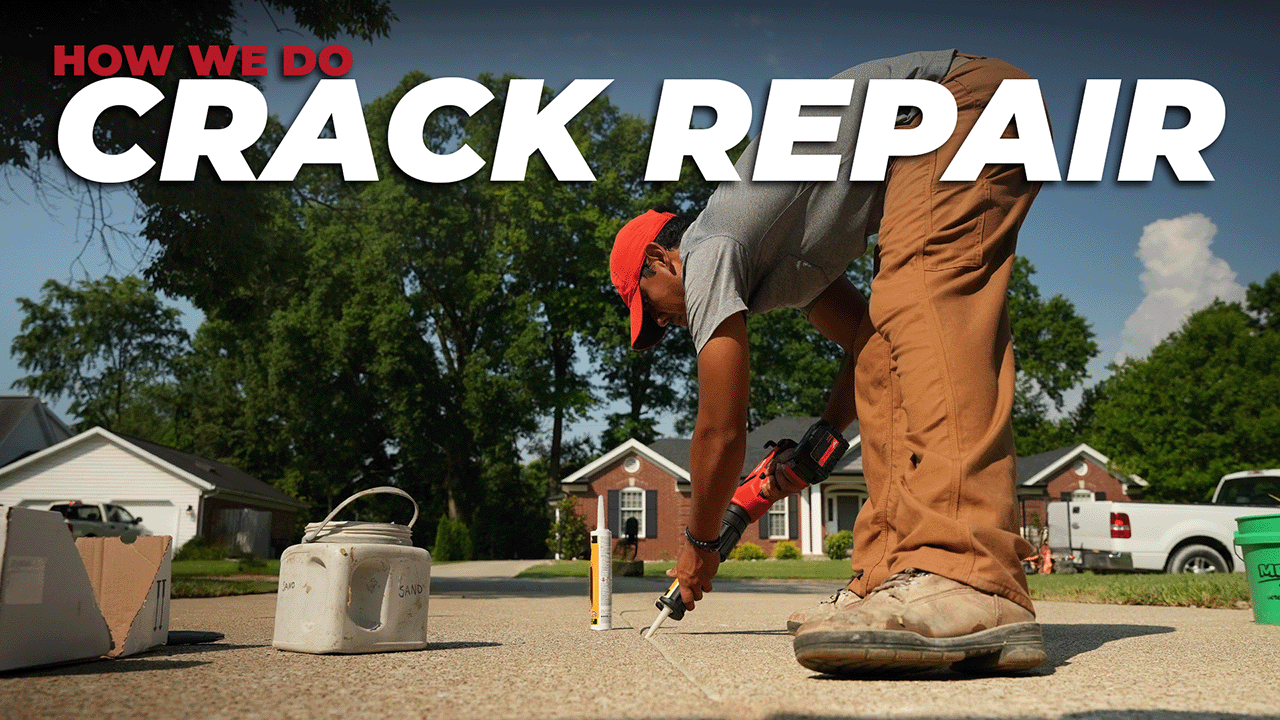Topics:
Search for topics or resources
Enter your search below and hit enter or click the search icon.
Providing your email address will keep you updated should we need to provide updates specific to your location.

Concrete is tough, but it's not invincible. Over time, even the strongest slabs develop cracks and gaps that invite water, weeds, and unwanted settling.
But don’t worry! Those cracks can be stopped in their tracks with concrete caulking, and in this article, we’re diving into A-1 Concrete Leveling’s expert method for sealing cracks and gaps.
Cracks in your concrete might seem like just a cosmetic issue, but they’re sneaky little pathways for trouble. Here's what can happen if those gaps are left unsealed:
Concrete caulking helps stop all that in its tracks by creating a flexible, watertight seal that moves with your concrete and stands up to the elements.
Caulking concrete correctly is more than just squeezing caulk in a crack. It requires precision, the right materials, and practice. Here’s how our pros do it:
A strong bond starts with a clean slate. We remove any dirt, debris, weeds, or old caulk from the crack or joint so the new caulk can adhere properly.
We use high-quality, flexible concrete caulk that’s specifically designed for exterior slabs. It flexes with the natural expansion and contraction of your concrete, ensuring a long-lasting, watertight seal.
If the crack is wide or deep, we may insert backer rod (a foam filler) to help the caulk sit at just the right depth for optimal performance.
We smooth the caulk to create a clean, polished finish. This not only looks better but also helps ensure solid contact with the concrete to improve durability.
As an optional final step, sand or stone can be added to the caulk while it's still wet to blend the repair in with the surrounding concrete. This adds color and texture.
Absolutely. In fact, caulking is often required at the time of concrete leveling to maintain the warranty. Bundling it with cleaning and sealing can make your concrete look new again while extending its lifespan.
Yes! Concrete caulking can be done as a DIY project. However, for the best looking results, it's better to leave it to the pros who caulk concrete day in and day out. (It's harder than it looks!)
Related Resource: How To Fix Concrete Cracks [DIY Guide]
We use a high-quality, flexible caulk that is meant specifically for use on concrete cracks and joints.
Concrete caulk is flexible and moves with your concrete, meaning it won't crack or flake off like rigid mortars or concrete patch kits.
Good concrete is an investment, and like any investment, it deserves protection. If you’ve spotted cracks or gaps forming, don’t wait for water, weeds, or settling to make things worse.
Our team at A-1 is ready to help you patch things up the right way. Request a free estimate from an A-1 Concrete Leveling location near you!
Want to learn more about how to protect your concrete? Check out our guide on How To Maintain Your Concrete from Concrete Academy.
Sarah Etler joined A-1 Concrete Leveling after receiving her Bachelor of Arts degree in English from Northern Kentucky University. As A-1's Content Marketing Manager, she works closely with industry experts to produce content that will best answer questions related to concrete repair and maintenance practices. Sarah loves living a life full of discovery and is excited every day to see what new things she can learn and share with those around her.
Topics: